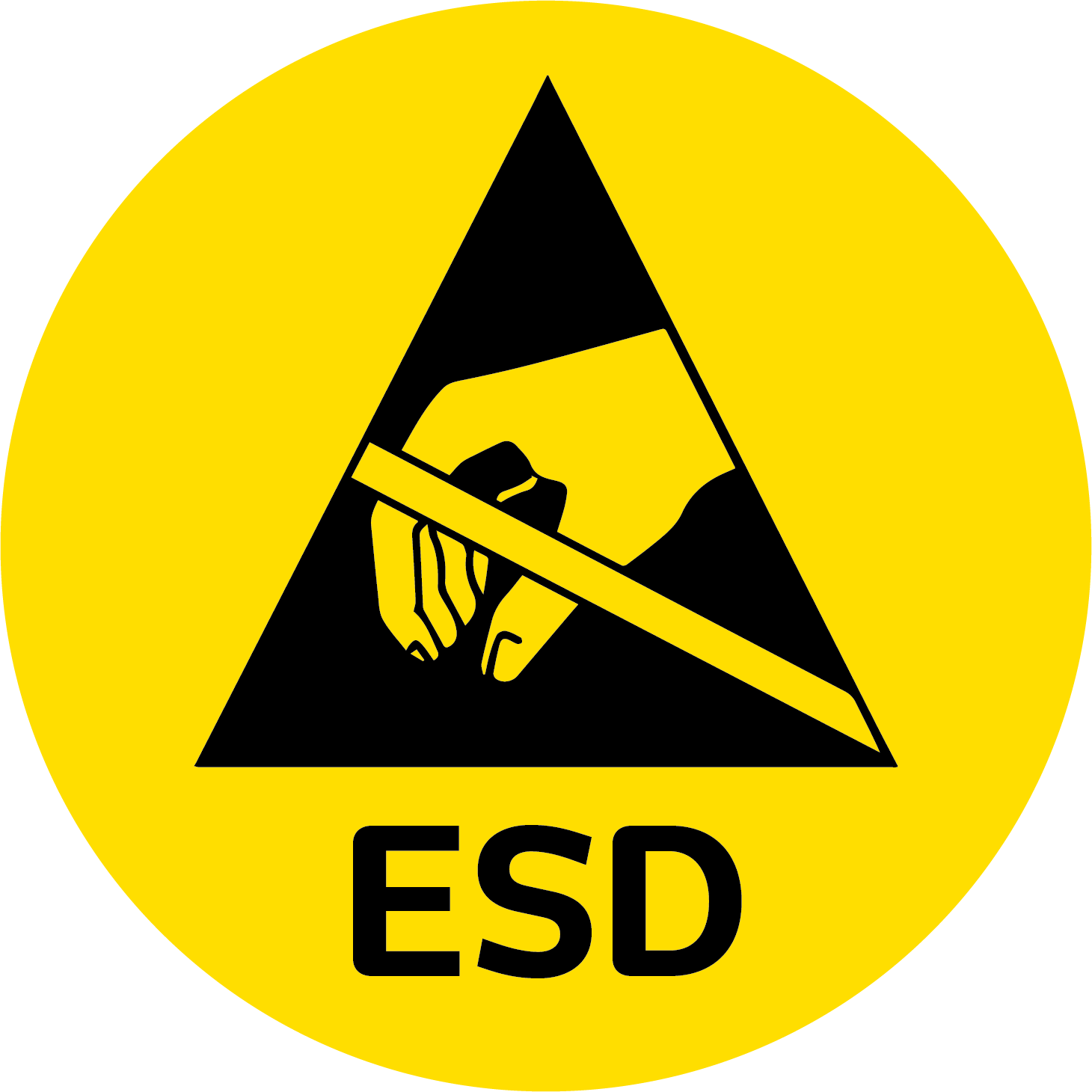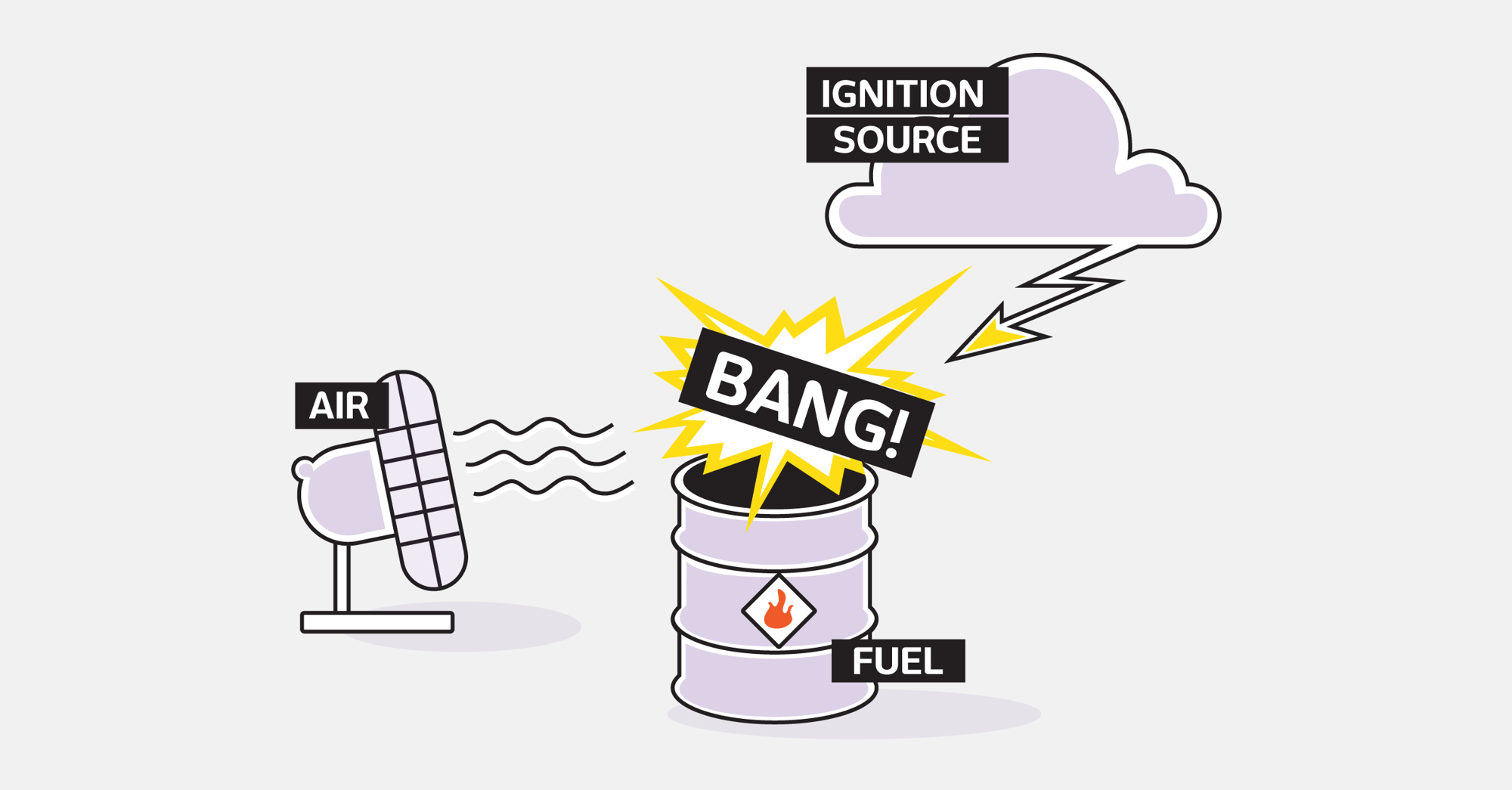Elektrisch leitfähige Kunststoffe
PRE-ELEC® - ein weltweit führender Anbieter von leitfähigen Compounds
Kontrolle der statischen Elektrizität
Die elektrische Leitfähigkeit von Kunststoffen kann durch verschiedene Füllstoffe erhöht werden. Dennoch hat sich Industrieruß als das am häufigsten verwendete elektrisch leitfähige Füllstoff etabliert.
Ruß bietet ein hervorragendes Preis-Leistungs-Verhältnis und zeitlich stabile Eigenschaften. In der Regel ist Ruß für Verbindungen mit einem Oberflächenwiderstand von bis zu 106 Ω am besten geeignet. In bestimmten Anwendungen kann Ruß auch auf ableitfähigen Flächen mit bis zu 108 Ω verwendet werden.
Als eines der ersten Unternehmen weltweit haben wir 1983 unsere erste elektrisch leitfähige Kunststoffmischung auf den Markt gebracht. Heute deckt die PRE-ELEC® Produktfamilie weite Bereiche des Leitfähigkeitsspektrums und eine große Auswahl an Basispolymeren ab.
Lassen Sie sich von Mr. Premix und Mr. Statix erklären, wie elektrisch leitfähige Kunststoffe vor elektrischen Schlägen schützen können.
Der Zusatz von Ruß verbessert die Leitfähigkeit
Ruß ist ein hoch leitfähiges Material mit geringer Dichte im Vergleich zu Metallen. Durch Einmischen in Kunststoff ist es möglich, die elektrischen Eigenschaften des Kunststoffs schrittweise zu verändern und seinen spezifischen Widerstand zu verringern. Der spezifische Widerstand der Verbindung korreliert mit dem durchschnittlichen Abstand zwischen den Rußpartikeln in der Kunststoffmatrix.
Bei einem bestimmten Beladungsgrad, der als Perkolationsschwelle bezeichnet wird, liegen die Rußpartikel nahe genug beieinander, um einen elektrischen Kontakt zu bilden, was sich in einer deutlichen Veränderung der Leitfähigkeit äußert. Außerdem erhöht die Zugabe von Ruß die Leitfähigkeit zunächst erheblich und bildet allmählich ein Plateau, das vom Leitfähigkeitsniveau des verwendeten Additivs abhängt.


Perkolationskurve. Die Zugabe von Ruß zum Kunststoff verringert den spezifischen Widerstand.
Mehr Informationen zum Thema finden Sie in unserem Blogbeitrag:
Carbon black magic turning electrically conductive plastics into products
LÖSUNGEN FÜR DIE INDUSTRIE
Diagnostik und Biowissenschaften
Gesundheitswirtschaft
Verpackungsindustrie
Kabelindustrie
Treiber für die Verwendung elektrisch leitfähiger Kunststoffe

Schutz gegen ungewollteelektrostatische Entladungen (ESD)
Schutz von Bauteilen vor statischer Elektrizität bei der Herstellung, dem Transport und der Handhabung von Elektronik.

Schutz vor Unfällen inexplosionsgefährdeten Umgebungen (Ex)
Beseitigung statischer Entladungen, die zu Explosions- und Brandrisiken führen können, z. B. in der Automobil-, Bergbau- und Prozessindustrie.
Darüber hinaus sind bei der Auswahl der Ausgangsmaterialien das geringe Gewicht, die Fähigkeit zur Massenproduktion, die Wirtschaftlichkeit und die Designfreiheit von Kunststoffen von großem Vorteil.
PRE-ELEC® ist erhältlich als
COMPOUNDS
Basis-Polymere
PE, PP, PS, ABS, PC, PC/ABS,
ABS, PA6, PBT, TPU, TPE
Verarbeitungsarten
Extrusion
Spritzgießen
Blasformen
Folienblasen
Nachbearbeitung
Schäumen
Tiefziehen
Konzentrate
Basis-Polymere
PE-HD, PE-LLD, EVA, PP,
PS, PA6
Verarbeitungsarten
Extrusion
Spritzgießen
Blasformen
Folienblasen
Nachbearbeitung
Schäumen
Tiefziehen
Weitere Informationen
Der typische Konzentrateinsatz liegt zwischen 40 und 60 Gew. -%, je nach angestrebtem Oberflächenwiderstand. Höhere Dosierungen sind ebenfalls möglich, wenn der Prozess höhere Prozessviskositäten zulässt.
Darüber hinaus sind das geringe Gewicht, die Fähigkeit zur Massenproduktion, die Wirtschaftlichkeit und die Designfreiheit von Kunststoffen bei der Auswahl der Ausgangsmaterialien von großem Vorteil.
Steigern Sie Ihr Geschäft mit elektrisch leitfähigen Kunststoffkonzentraten
Rußkonzentrate bieten eine hervorragende Möglichkeit, die Rohstoffkosten zu senken. In unseren PRE-ELEC® -Konzentraten ist der Rußgehalt auf das höchstmögliche Niveau optimiert worden. Wenn Sie eine maximale Kosteneffizienz anstreben, können Sie recycelte Kunststoffe oder Mahlgut aus Ihrem eigenen Prozess zur Verdünnung des Konzentrats verwenden. Ein kleiner aber innovativer Schritt kann zu erheblichen Kosteneinsparungen führen.
Neben den wirtschaftlichen Vorteilen bieten Konzentrate auch die Möglichkeit, die Produkteigenschaften zu verändern. Um dem Endprodukt Steifigkeit und Festigkeit zu verleihen, kann der verstärkte Kunststoff zur Verdünnung verwendet werden.
Neben den wirtschaftlichen Vorteilen bieten Konzentrate auch die Möglichkeit, die Produkteigenschaften zu verändern. Um dem Endprodukt Steifigkeit und Festigkeit zu verleihen, kann der verstärkte Kunststoff zur Verdünnung verwendet werden.
MEHR ERFAHREN
Elektrisch leitfähige KonzentrateHerausforderungen bei der Verarbeitung angehen
Premix hat über 30 Jahre Erfahrung in der Herstellung von hochwertigen Funktionskunststoffen. Unsere elektrisch leitfähigen Kunststoffe haben eine sehr gute Dispersion (gleichmäßige Verteilung des Rußes im Kunststoff). Die Bewältigung der folgenden Herausforderungen ist Teil unserer Expertise:
Verarbeitungshinweise
Laden Sie das Zusatzmaterial herunter: Mit Ruß gefüllte elektrisch leitfähige Compounds und Konzentrate im Spritzgieß- und Extrusionsverfahren.
Mehr über die Verarbeitung von PRE-ELEC®Scherempfindlichkeit
Hohe Scherkräfte führen oft zu Schäden im Rußnetzwerk. Dies führt zu einem höheren Widerstand der Formteile. Der Oberflächenwiderstand ist immer eine Summe aus Material- und Formgebungsdetails wie Werkzeugkühlung, Schmelzetemperatur, Wandstärke und Form der Teile.
Feuchtigkeitsempfindlichkeit
Alle Industrieruße sind feuchtigkeitsempfindlich, manche mehr, manche weniger. Feuchtigkeit ist eines der typischsten Probleme für Verarbeiter. Diese kann sich darauf auswirken, wie leicht sich das Material zu einem Endprodukt verarbeiten lässt.
Premix bietet immer die Möglichkeit, die Mischung vor der Lieferung zu trocknen, und gibt für jedes Material Trocknungsempfehlungen.
Auswirkungen auf die mechanischen Eigenschaften
Die Zugabe von Ruß zu Kunststoffen verändert die mechanischen Eigenschaften, z. B. die Schlagzähigkeit und die Zugfestigkeit. Unser Fachwissen liegt in der Optimierung und dem Ausgleich verschiedener Materialeigenschaften auf einem guten Niveau für die beabsichtigte Anwendung der Produkte.
Auswirkungen auf die Verarbeitungsviskosität
Rußfüllungen können die Schmelzviskosität eines Kunststoffs erhöhen. Die Wirkung hängt von mehreren Faktoren ab, darunter die Füllstoffmenge, die Oberflächenchemie und die spezifische Oberfläche des verwendeten Rußes.
Unser Fachwissen besteht darin, die Viskosität und andere notwendige Eigenschaften auf einem angemessenen Niveau zu halten und gleichzeitig elektrische Leitfähigkeit einzuführen.
Halten Sie Ihre Produktionslinien sauber
Ruß kann in einer Produktionslinie ein Chaos verursachen. Wenn Sie uns den Kohlenstoff in die Kunststoffe mischen lassen, können Sie Ihre Produktionslinien sauber halten.